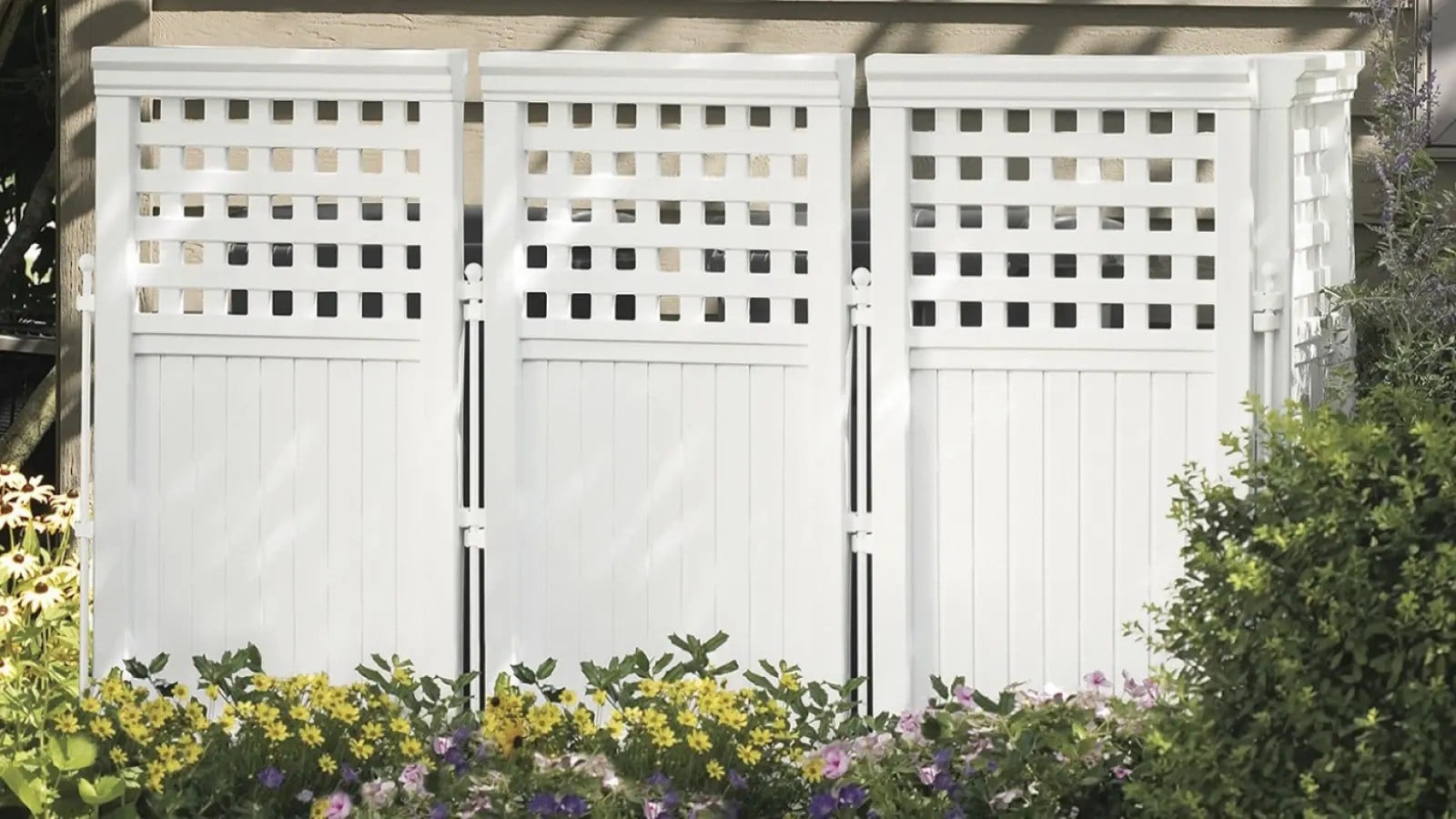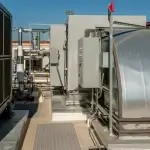Introduction
Welcome to our blog on maximizing efficiency by shading your HVAC unit. In this article, we will discuss why shading your HVAC unit is a smart move and the benefits it brings. Understanding how your HVAC unit works and the role of shade in improving efficiency is crucial for making informed decisions. We will also guide you on choosing the right location for shading and installing the appropriate solutions. Finally, we will explore how regular maintenance and additional steps can optimize efficiency. By implementing these strategies, you can significantly reduce energy costs, prolong the lifespan of your HVAC unit, improve its performance, and prevent overheating. So let’s dive in!
Why shading your HVAC unit is important
Shading your HVAC unit is important because it helps to optimize its performance and increase cooling efficiency. When exposed to direct sunlight, the unit has to work harder to cool the air, leading to higher energy consumption and increased wear and tear. By providing shade, you can significantly reduce the strain on your HVAC system, lower energy costs, prolong its lifespan, improve its overall performance, and prevent potential overheating issues.
The benefits of maximizing efficiency
Maximizing efficiency of your HVAC unit through proper shading offers several benefits. Firstly, it reduces energy costs by reducing the workload on the system. Additionally, it prolongs the lifespan of the unit by minimizing wear and tear. The improved performance of a shaded unit also ensures better cooling and prevents potential issues like overheating. By optimizing efficiency, you not only save money but also contribute to a more sustainable environment.
Understanding the Basics
To fully appreciate the importance of shading your HVAC unit, it’s crucial to understand how it works. Your HVAC unit regulates temperature by removing heat from indoor spaces and transferring it outside. However, excessive heat exposure can strain the system and decrease efficiency. Shade plays a vital role in improving cooling efficiency by reducing the amount of heat absorbed by the unit. By providing a cooler environment for your HVAC unit, shading helps maximize its performance and extends its lifespan.
How your HVAC unit works
An HVAC unit works by regulating temperature through a process known as refrigeration. It removes heat from indoor spaces and transfers it outside, creating a cooler environment indoors. The unit consists of an outdoor condenser that compresses and cools the refrigerant, and an indoor evaporator that releases the cooled air. This continuous cycle allows the HVAC unit to maintain a comfortable temperature in your office.
The role of shade in improving efficiency
Shading your HVAC unit plays a crucial role in improving its efficiency. By providing protection from direct sunlight, shade helps prevent overheating of the unit and allows it to cool more effectively. This reduces the strain on the system and enhances its performance, ultimately leading to lower energy consumption and reduced cooling costs. Additionally, shading can prolong the lifespan of the HVAC unit by minimizing wear and tear caused by excessive heat exposure.
Choosing the Right Location for Shading
Choosing the right location for shading your HVAC unit is crucial to maximize its efficiency. Analyze the current location of your unit and identify potential options for shading. Look for areas with natural shade from trees, buildings, or structures. Consider the direction of sunlight and choose a location that provides optimal protection from direct sunlight throughout the day. Properly placed shading will significantly improve your cooling efficiency and reduce energy costs.
Analyzing the current location of your HVAC unit
Analyzing the current location of your HVAC unit is crucial in determining if shade is needed. Consider the position of your unit in relation to sunlight exposure throughout the day. Look for any potential obstacles that may hinder shading, such as nearby buildings or trees. Taking note of these factors will help you identify whether relocating or implementing shading solutions is necessary for maximizing efficiency.
Identifying potential shading options
When looking for potential shading options for your HVAC unit, consider both natural and man-made solutions. Natural options include planting trees or installing awnings or pergolas. Man-made options include shade cloths or screens specifically designed for HVAC units. Consider the location of your unit and the amount of shade needed to determine the most suitable option for maximizing efficiency and protecting your HVAC unit from overheating.
Installing the Right Shading Solutions
To maximize the efficiency of your HVAC unit, it is crucial to install the right shading solutions. There are various options available, including awnings, pergolas, shade cloths, and screens. Consider factors such as the amount of shade required and the aesthetics of your space when choosing the best solution. Additionally, ensure that the shading material is durable and can withstand weather conditions. Proper installation is key to ensuring optimal performance and longevity of your shaded HVAC unit.
Types of shading options for your HVAC unit
There are several shading options available to maximize the efficiency of your HVAC unit. These include awnings, pergolas, shade cloths, and screens. Awnings are installed above windows to block direct sunlight, while pergolas provide partial shade over outdoor units. Shade cloths can be attached to structures or fences, and screens are designed to shield the unit without impeding airflow. Choosing the right option depends on your specific needs and aesthetic preferences.
Factors to consider when selecting shading materials
When selecting shading materials for your HVAC unit, there are several factors to consider. First, choose materials that are durable and weather-resistant to withstand outdoor conditions. Additionally, opt for materials that provide adequate shade without blocking airflow. Consider the aesthetics of the materials and how they will complement your office’s exterior. Lastly, ensure that the chosen materials are easy to install and maintain over time.
Maintaining and Optimizing Efficiency
Regular maintenance is essential to keep your shaded HVAC unit running at peak efficiency. Schedule professional inspections and cleanings annually to ensure all components are in good working condition. Replace filters regularly to maintain proper airflow. Additionally, consider upgrading to a programmable thermostat and sealing any air leaks in your business. These steps will help maximize your system’s energy efficiency and prolong its lifespan, saving you money in the long run.
Regular maintenance for your shaded HVAC unit
Regular maintenance is crucial for keeping your shaded HVAC unit running efficiently. Schedule annual inspections and cleanings to ensure all components are in prime condition. Replace filters regularly to maintain proper airflow. Consider upgrading to a programmable thermostat and sealing any air leaks in your business. These steps will maximize energy efficiency and prolong the lifespan of your system, saving you money in the long run.
Additional steps to maximize efficiency
To further maximize efficiency, consider upgrading to a programmable thermostat. This allows you to schedule temperature adjustments for different times of the day, reducing energy usage when you’re not at business. Additionally, sealing any air leaks in your business will prevent cool air from escaping and hot air from entering, ensuring your HVAC unit doesn’t have to work as hard. These small steps can make a significant difference in reducing energy costs and improving unit performance.
Conclusion
In conclusion, shading your HVAC unit is a smart move that can greatly improve its efficiency and performance. By reducing overheating and optimizing cooling efficiency, you can significantly lower your energy costs and extend the lifespan of your unit. With the added benefits of environmental sustainability, shading your HVAC unit is an investment that pays off in the long run.
The long-term savings and environmental benefits of shading your HVAC unit
Shading your HVAC unit not only maximizes its efficiency and performance but also brings long-term savings and environmental benefits. By reducing the strain on your unit, shading helps to lower energy costs and extend its lifespan, saving you money in the long run. Additionally, by consuming less energy, shaded HVAC units contribute to a greener and more sustainable environment. Shading is indeed a smart move for both your wallet and the planet.
People Also Ask Questions
- Why is shading important for my HVAC unit?
Shading helps to prevent overheating and reduces the strain on your HVAC unit, resulting in improved efficiency and performance. - How does shading help save energy costs?
By reducing the workload on your HVAC unit, shading helps it operate more efficiently, leading to lower energy consumption and decreased cooling costs. - Will shading my HVAC unit affect its lifespan?
Yes, shading can prolong the lifespan of your HVAC unit by preventing excessive heat exposure and reducing wear and tear. - What are some effective shading options for my HVAC unit?
Common options include planting trees or installing awnings, pergolas, or other structures that provide shade while allowing proper ventilation. - Does shade significantly improve cooling efficiency?
Yes, shade can significantly improve cooling efficiency by reducing the temperature around your HVAC unit and minimizing the need for it to work harder to cool down the surrounding air. - Is regular maintenance still important for a shaded HVAC unit?
Yes, regular maintenance is essential even for shaded units to ensure optimal performance. This includes cleaning filters, checking refrigerant levels, and inspecting components for any issues.
Remember that finding a balance between providing adequate shade and maintaining proper air circulation is crucial to maximize the benefits of shading for your HVAC unit.





